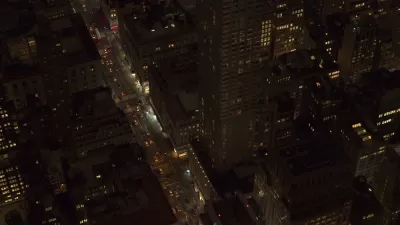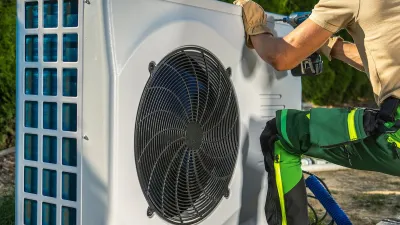The city that never sleeps depends on 396,572 street lights. As bright white LEDs replace the familiar amber glow, what does tomorrow (night) hold?

New York’s nightscape is as iconic (think film noir street corners and neon glitterati escapades) as it is taken for granted. A city without streetlights is impossible to imagine, but New York’s 396,572 street-side luminaires are as unremarkable as the streets’ paving — invisible until something changes. An initiative to replace sodium and halogen bulbs with energy- and cost-efficient LEDs has thrown the nightscape suddenly into question, as some city residents bemoan the loss of romance (and sleep). Nocturnal animals, too, are finding the conversion hard to take. But the iconic and under-appreciated nighttime infrastructure is also essential to the modern city. In New York, “nightlife” generates 300,000 jobs and $10 billion annually, and the recent establishment of an Office of Nightlife and the appointment of a new “night mayor” signals intention to give after-dark the same consideration as the daily grind. LEDs could be a boon for that industry, and for others who prefer to stay out late. SWA’s innovation lab, xl studied New York’s LED conversion for its impacts on the “Urban Sensorium”; below, Emily Schlickman explains what’s going on, what’s to come, and what it all could mean for the night and its many inhabitants.
FULL STORY: Illuminated Futures

Alabama: Trump Terminates Settlements for Black Communities Harmed By Raw Sewage
Trump deemed the landmark civil rights agreement “illegal DEI and environmental justice policy.”

Planetizen Federal Action Tracker
A weekly monitor of how Trump’s orders and actions are impacting planners and planning in America.

The 120 Year Old Tiny Home Villages That Sheltered San Francisco’s Earthquake Refugees
More than a century ago, San Francisco mobilized to house thousands of residents displaced by the 1906 earthquake. Could their strategy offer a model for the present?

In Both Crashes and Crime, Public Transportation is Far Safer than Driving
Contrary to popular assumptions, public transportation has far lower crash and crime rates than automobile travel. For safer communities, improve and encourage transit travel.

Report: Zoning Reforms Should Complement Nashville’s Ambitious Transit Plan
Without reform, restrictive zoning codes will limit the impact of the city’s planned transit expansion and could exclude some of the residents who depend on transit the most.

Judge Orders Release of Frozen IRA, IIJA Funding
The decision is a victory for environmental groups who charged that freezing funds for critical infrastructure and disaster response programs caused “real and irreparable harm” to communities.
Urban Design for Planners 1: Software Tools
This six-course series explores essential urban design concepts using open source software and equips planners with the tools they need to participate fully in the urban design process.
Planning for Universal Design
Learn the tools for implementing Universal Design in planning regulations.
Clanton & Associates, Inc.
Jessamine County Fiscal Court
Institute for Housing and Urban Development Studies (IHS)
City of Grandview
Harvard GSD Executive Education
Toledo-Lucas County Plan Commissions
Salt Lake City
NYU Wagner Graduate School of Public Service




























